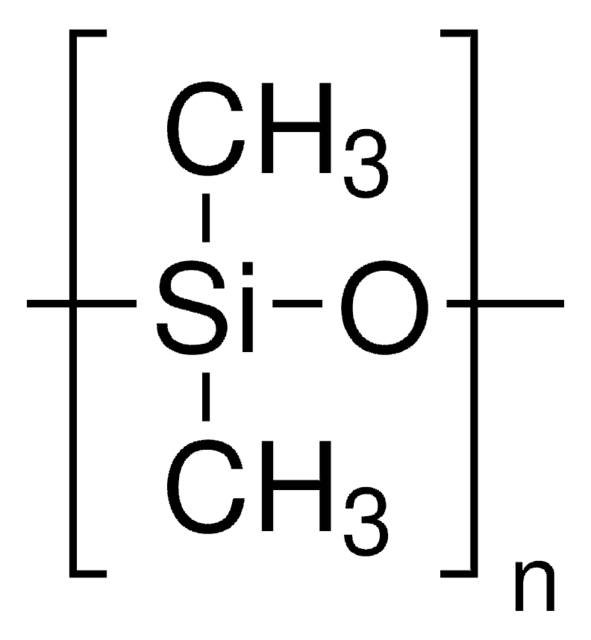10838
Silicone oil AP 100
viscosity ~100 mPa.s, neat(25 °C)
Synonym(s):
Polyphenyl-methylsiloxane
Sign Into View Organizational & Contract Pricing
All Photos(1)
About This Item
Recommended Products
refractive index
n20/D 1.502
Quality Level
viscosity
~100 mPa.s, neat(25 °C)
density
1.060-1.070 g/mL at 20 °C
Related Categories
General description
Silicone oil AP 100 also known as polyphenyl-methylsiloxane (PPMS) is a high viscosity silicone compound that can be prepared by the anionic polymerization process. It has a polydispersity of 1.04, glass transition temperature (Tg) of -50°C and surface tension of 27 nN/m.
Application
Silicone oil AP 100 can be potentially used as a carbon paste binder for the formation of tyrosinase electrode for biosensor applications. It forms a thin layer that facilitates the micro extraction of drugs from human breast milk.
Features and Benefits
Especially good thermostability (−30-+350°C)
Storage Class Code
10 - Combustible liquids
WGK
WGK 3
Flash Point(F)
482.0 °F
Flash Point(C)
250 °C
Personal Protective Equipment
dust mask type N95 (US), Eyeshields, Gloves
Choose from one of the most recent versions:
Already Own This Product?
Find documentation for the products that you have recently purchased in the Document Library.
Customers Also Viewed
Experimental measurement of forces and energies associated with capillary rise in a vertical tube
Extrand CW and Moon SI
Journal of Colloid and Interface Science, 407, 488-492 (2013)
Liquid-phase microextraction of drugs from human breast milk
Bjorhovde A, et al.
Analytica Chimica Acta, 491(3), 151-161 (2003)
Influence of casting solvent on phenyl ordering at the surface of spin cast polymer thin films
Myers JN, et al.
Journal of Colloid and Interface Science, 423, 60-66 (2014)
Improved selective electrocatalytic oxidation of phenols by tyrosinase-based carbon paste electrode biosensor
Rogers KR, et al.
Electrochimica Acta, 45, 4373-4379 (2000)
Gema Flores et al.
Journal of chromatography. A, 1153(1-2), 29-35 (2007-02-20)
A method based on the use of absorbents as packing materials in the interface of the direct coupling between reversed phase liquid chromatography and gas chromatography (RPLC-GC) is proposed. To that end, a comparative study on different adsorbents and absorbents
Our team of scientists has experience in all areas of research including Life Science, Material Science, Chemical Synthesis, Chromatography, Analytical and many others.
Contact Technical Service